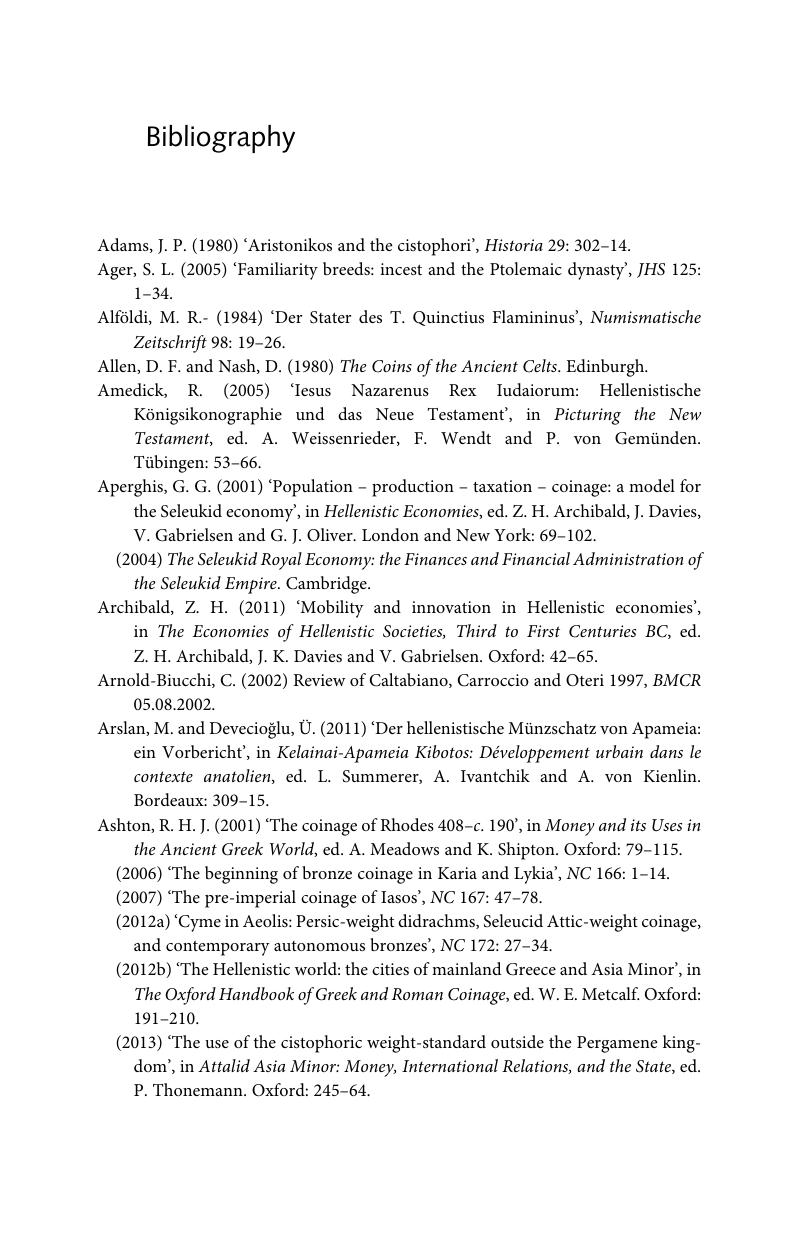Bibliography
Published online by Cambridge University Press: 05 December 2015
Summary

Information
- Type
- Chapter
- Information
- The Hellenistic WorldUsing Coins as Sources, pp. 201 - 222Publisher: Cambridge University PressPrint publication year: 2016
